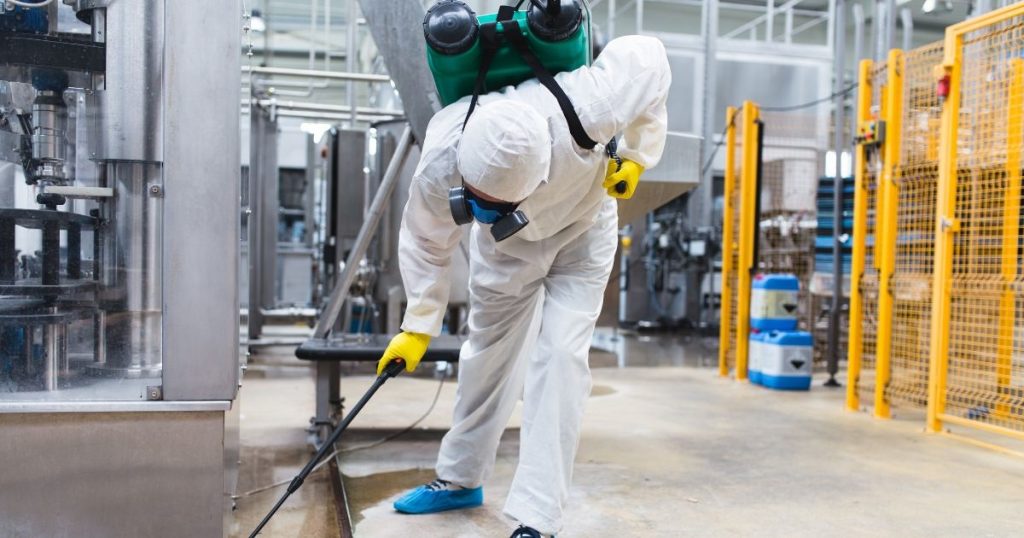Pest control in manufacturing plants is crucial for maintaining product safety, meeting regulatory standards, and protecting your facility’s reputation. You face unique challenges because pests can contaminate raw materials, damage equipment, and disrupt production lines.
Effective pest control in manufacturing plants requires a proactive and integrated approach that includes regular inspections, sanitation, and targeted treatments to prevent infestations before they start. Understanding the common pest risks and how they thrive in industrial environments enables you to implement effective strategies that minimize these threats.
By controlling pests efficiently, you reduce downtime, avoid costly recalls, and ensure compliance with industry regulations. Keeping your manufacturing plant pest-free is not just about eliminating current issues, but also about building a system that prevents future problems.
Understanding Pest Control in Manufacturing Plants
Effective pest control in manufacturing plants depends on identifying specific risks and the common pests that affect these environments. Knowing how pests enter and thrive will help you implement targeted prevention and monitoring strategies.
Pest Risks in Industrial Settings
Your manufacturing plant offers multiple entry points and food sources for pests. Cracks in walls, open doors, and poorly sealed windows create access routes for rodents and insects. Moist areas resulting from leaks or condensation provide breeding grounds for pests such as cockroaches and flies.
Contamination risks are high because pests carry bacteria and can spoil raw materials or finished products. These risks vary depending on the plant’s location, processes, and sanitation practices. You must maintain strict hygiene and conduct regular inspections to minimize the attraction and infestation of pests.
Common Pests in Manufacturing Environments
Rats and mice are the most frequent pests, causing damage by gnawing on cables and contaminating food goods. Cockroaches are commonly found in areas with high moisture and food residue, carrying pathogens that pose significant health hazards.
Flies breed in waste or organic material and can spread bacteria across your facility. Stored product pests, such as beetles or moths, infest packaging and bulk ingredients, thereby reducing product quality. Identifying these pests early is crucial to protecting your manufacturing environment effectively.
Key Industrial Pest Management Strategies
Effective pest management in manufacturing plants relies on structured prevention, targeted rodent control, and consistent pest control procedures. These methods help maintain hygiene, protect product integrity, and comply with industry regulations.
Pest Prevention in Production Facilities
You must focus on eliminating entry points for pests by sealing cracks, installing door sweeps, and maintaining tight building envelopes. Regular inspection of ventilation systems and drains prevents pest harborage.
Waste management is crucial—keep dumpsters away from production areas and use sealed containers to prevent contamination. Scheduling frequent cleanings reduces residue that attracts insects.
Humidity control and proper storage of raw materials lower the risk of infestation. In Keller and similar industrial settings, preventing pests before they enter is more cost-effective than treating infestations after they occur.
Rodent Control in Manufacturing
Rodents cause physical damage and contaminate products. You should implement baiting programs with tamper-resistant bait stations placed along walls and near food sources.
Trapping is effective where chemical use is limited. Regular monitoring and swift action based on inspection results are crucial to the success of rodent control.
Maintaining clear zones around facilities helps limit rodent access. Your rodent control in manufacturing must also involve employee training to identify early signs of rodent activity.
Factory Pest Control Procedures
A documented pest control protocol is vital for consistent results. Schedule routine inspections and maintain records of pest activity, treatment applications, and corrective measures.
Select treatment methods that comply with health and safety regulations and are tailored to your specific manufacturing environment. Avoid contamination risks by timing applications outside production hours.
Collaboration with certified pest control professionals ensures specialized knowledge. Your factory pest control procedures should include staff awareness programs to encourage reporting and prevention efforts.
Compliance and Hygiene Standards
Maintaining strict hygiene and pest control measures is crucial to ensure safety and operational efficiency in manufacturing plants. You need solid procedures to prevent contamination, meet regulations, and avoid costly shutdowns.
Hygiene and Pest Control in Factories in Keller
In Keller, factories must adhere to specific hygiene protocols to effectively manage pest risks. Regular cleaning schedules and proper waste disposal reduce pest attractants.
Implementing physical barriers, such as screen doors and sealing entry points, prevents pests from entering your facility. Monitoring with traps and routine inspections helps spot infestations early.
You should document all pest control activities to demonstrate compliance with Keller’s local health and safety guidelines. Training staff on hygiene standards and pest awareness also strengthens your defense against these threats.
Pest Control for Compliance in Manufacturing
Pest control in Keller manufacturing plants is crucial for meeting industry regulations, including those set by the FDA and OSHA. Your pest management program must include hazard analysis and critical control points related to pest activity.
Use licensed pest control professionals to perform treatments and provide detailed reports. These documents are essential during audits to prove your compliance.
Regular audits of your pest control measures ensure adherence to legal requirements and minimize the risk of contamination. Effective pest control protects the integrity of your products and your facility’s reputation.
Getting In Touch with the Best Pest Control Service
When selecting a pest control service for your manufacturing plant, prioritize companies with experience in pest control to ensure compliance with manufacturing regulations. This ensures they understand the specific rules and standards your facility must meet.
Look for providers who offer comprehensive inspections and customized treatment plans tailored to your specific needs. Effective pest management minimizes risks related to contamination and regulatory fines.
Use this simple checklist to evaluate potential pest control services:
| Criteria | What to Look For |
| Licensing and certifications | Valid licenses, regulatory knowledge |
| Experience | Specialization in industrial settings |
| Treatment methods | Safe, approved, and environmentally responsible |
| Customer service | Responsiveness and clear communication |
| Follow-up support | Regular monitoring and maintenance options |
You should ask for references and read online reviews to verify the provider’s reliability. Quality pest control partners help maintain your plant’s compliance and operational efficiency.
For wildlife removal and humane solutions, consider contacting Critter Stop. Their attention to detail and high standards consistently earn positive customer feedback.
Critter Stop has an excellent reputation for delivering effective pest and wildlife control combined with outstanding customer service. Contact Critter Stop at (214) 234-2616 for a complimentary inspection and a customized solution tailored to your facility’s needs.

Oliver Smith is an experienced blogger at Grammar Globe, Oliver Smith, an expert in English grammar and a master of wit, brings language to life with his playful take on puns. Through his works, he weaves humor into the rules of grammar, making learning fun and engaging for readers of all ages. Discover language with a smile!”






